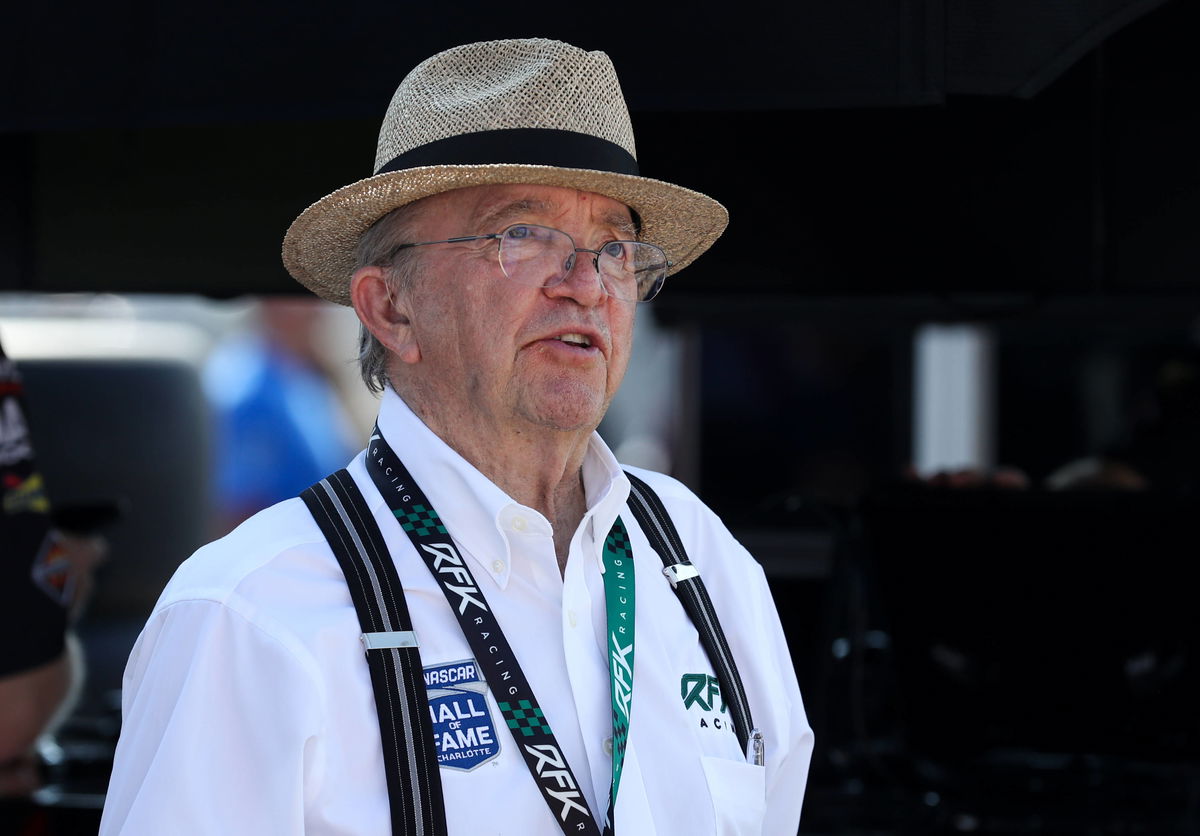
Imago
NASCAR, Motorsport, USA Cup Practice and Qualifying Sep 14, 2024 Watkins Glen, New York, USA NASCAR Cup Series owner Jack Roush stands on pit road during practice and qualifying for the Go Bowling at The Glen at Watkins Glen International. Watkins Glen Watkins Glen International New York USA, EDITORIAL USE ONLY PUBLICATIONxINxGERxSUIxAUTxONLY Copyright: xMatthewxO Harenx 20240914_gma_bm2_0071

Imago
NASCAR, Motorsport, USA Cup Practice and Qualifying Sep 14, 2024 Watkins Glen, New York, USA NASCAR Cup Series owner Jack Roush stands on pit road during practice and qualifying for the Go Bowling at The Glen at Watkins Glen International. Watkins Glen Watkins Glen International New York USA, EDITORIAL USE ONLY PUBLICATIONxINxGERxSUIxAUTxONLY Copyright: xMatthewxO Harenx 20240914_gma_bm2_0071
Watch What’s Trending Now!
Since founding Roush Racing in 1988, the man known as “The Cat in the Hat” turned his vision into a full-blown dynasty. With more than 300 NASCAR victories and eight championships across the Cup, Xfinity, and Truck Series, Jack Roush made a career out of blending engineering smarts with a sharp eye for talent. Drivers like Mark Martin, Matt Kenseth, and Carl Edwards all owe huge chunks of their success to his program. But behind all the trophies and milestones lies a pivotal moment where Roush’s influence stretched beyond his own team and quietly changed the entire Cup Series forever.
Today, NASCAR teams are capped at four full-time Cup Series entries, a rule that seems so standard now that most fans barely think about it. But this wasn’t always the case. In fact, the four-car limit traces directly back to the mid-2000s. That’s when Jack Roush’s powerhouse operation forced NASCAR to rethink what fairness in the sport really looked like.
As Dale Earnhardt Jr. recalled, “Roush Fenway had five cars. They had half of the Chase field in the playoffs in the postseason.” That’s not an exaggeration. In 2005, all five of Roush’s drivers, Mark Martin, Matt Kenseth, Kurt Busch, Carl Edwards, and Greg Biffle, qualified for the Chase, a staggering display of dominance that rattled the competitive balance.
ADVERTISEMENT
Robin Pemberton, then NASCAR’s vice president of competition,
explained the thinking behind the cap. “I think the concern was that you could have this big huge organization eventually. Have 10 teams, whatever. Make up some number.” The four-car limit extended to owners and any affiliate group, which included situations where one or more of the car owners were entitled to receive, or actually received, any financial consideration based upon the performance of the cars entered by the other car owners, or had any revenue sharing or ownership stake in the team.The veteran crew chief of over 17 years added,
“And the concern, I think, was that you could wind up with three or four owners, five owners and no independence. Literally. And that was that was not healthy.” Without restrictions, wealthier teams could endlessly add entries, stacking the field with their own drivers and resources. That raised fears of NASCAR turning into a game of who had the deepest pockets rather than who had the best talent or smartest strategy.The four-car limit wasn’t meant as a slight against Roush, but his team’s dominance was the wake-up call. By putting a cap in place, NASCAR ensured that no single owner could monopolize the sport. This protected both its competitive balance and the independent spirit that keeps fans hooked.
While that was one way to enhance the entire NASCAR Cup Series,
constant efforts have since been made to continue its evolution.Brad Keselowski: NASCAR’s horsepower era is about to shift
Roush Fenway Keselowski Racing co-owner and Cup Series veteran Brad Keselowski is convinced that NASCAR is gearing up for one of its biggest technical shakeups yet. On Corey LaJoie’s Stacking Pennies podcast, Keselowski revealed that the sanctioning body plans to bump up the horsepower package starting in 2026.
The current Next-Gen car, introduced in 2022, runs at a baseline of 670 horsepower, though in practice, it’s closer to 685–690. According to Keselowski, that number could soon jump to around 740–750. “NASCAR is going to change,” he stated, noting that a bigger spacer may be part of the adjustment to help transition the engines to the new power levels.
The change has many drivers buzzing. Team Penske’s Joey Logano has already voiced excitement, pointing out that the drivetrain will need strengthening to withstand the added punch. Keselowski himself framed the move as a push toward more thrilling racing. “It’s all about making the product better for the fans,” he emphasized.
Still, Keselowski admitted the NextGen era hasn’t come easy for him personally. With the old cars, throttle control was the art – how a driver feathered the gas pedal often made the difference. With the NextGen setup, it’s more about raw pedal pressure, a style that has forced him to rethink his approach. “It’s been a struggle,” he admitted, candid about the adjustment curve.
Despite not being in the 2025 playoffs and still hunting for his first win of the year, Keselowski remains hopeful. He believes the upcoming horsepower boost won’t just make the cars faster but the racing itself more competitive and entertaining. For a driver who’s been reshaped by NASCAR’s new era, the 2026 rules could be the reset button he (and the sport) have been waiting for.
ADVERTISEMENT
ADVERTISEMENT
ADVERTISEMENT
ADVERTISEMENT

